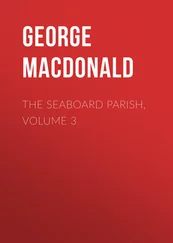George Warburton - The Conquest of Canada, Vol. 1
Здесь есть возможность читать онлайн «George Warburton - The Conquest of Canada, Vol. 1» — ознакомительный отрывок электронной книги совершенно бесплатно, а после прочтения отрывка купить полную версию. В некоторых случаях можно слушать аудио, скачать через торрент в формате fb2 и присутствует краткое содержание. Жанр: foreign_prose, История, foreign_edu, foreign_antique, на английском языке. Описание произведения, (предисловие) а так же отзывы посетителей доступны на портале библиотеки ЛибКат.
- Название:The Conquest of Canada, Vol. 1
- Автор:
- Жанр:
- Год:неизвестен
- ISBN:нет данных
- Рейтинг книги:5 / 5. Голосов: 1
-
Избранное:Добавить в избранное
- Отзывы:
-
Ваша оценка:
- 100
- 1
- 2
- 3
- 4
- 5
The Conquest of Canada, Vol. 1: краткое содержание, описание и аннотация
Предлагаем к чтению аннотацию, описание, краткое содержание или предисловие (зависит от того, что написал сам автор книги «The Conquest of Canada, Vol. 1»). Если вы не нашли необходимую информацию о книге — напишите в комментариях, мы постараемся отыскать её.
The Conquest of Canada, Vol. 1 — читать онлайн ознакомительный отрывок
Ниже представлен текст книги, разбитый по страницам. Система сохранения места последней прочитанной страницы, позволяет с удобством читать онлайн бесплатно книгу «The Conquest of Canada, Vol. 1», без необходимости каждый раз заново искать на чём Вы остановились. Поставьте закладку, и сможете в любой момент перейти на страницу, на которой закончили чтение.
Интервал:
Закладка:
131
"The channel of the St. Lawrence is here so spacious that it is called the Lake of the Thousand Islands. The vast number implied in this name was considered a vague exaggeration, till the commissioners employed in fixing the boundary with the United States actually counted them, and found that they amounted to 1692. They are of every imaginable size, shape, and appearance; some barely visible, others covering fifteen acres; but, in general, their broken outline presents the most picturesque combinations of wood and rock. The navigator, in steering through them, sees an ever-changing scene: sometimes he is inclosed in a narrow channel; then he discovers before him twelve openings, like so many noble rivers; and, soon after, a spacious lake seems to surround him on every side."—Bouchette, vol. i., p. 156; Howison's Sketches of Canada , p. 46.
132
"The St. Lawrence traverses the whole extent of Lower Canada, as the lakes every where border and inclose Upper Canada. There is a difficulty in tracing its origin, or, at least, which of the tributaries of Lake Superior is to be called the St. Lawrence. The strongest claim seems to be made by the series of channels which connect all the great upper lakes, though, strictly speaking, till after the Ontario, there is nothing which can very properly be called a river. There are only a number of short canals connecting the different lakes, or, rather, separating one immense lake into a number of great branches. It seems an interesting question how this northern center of the continent, at the precise latitude of about 50°, should pour forth so immense and overwhelming a mass of waters; for through a great part of its extent it is quite a dead flat, though the Winnepeg, indeed, draws some tributaries from the Rocky Mountains. The thick forests with which the surface is covered, the slender evaporation which takes place during the long continuance of cold, and, at the same time, the thorough melting of the snows by the strong summer heat, seem to be the chief sources of this profuse and superabundant moisture."—H. Murray's Historical Account of Discoveries and Travels in North America , vol. ii., p. 459, 1829.
133
"The statements laid before Parliament thus enumerate and describe the five rapids of the St. Lawrence, which are impassable by steam, and occur between Montreal and Kingston, a distance, by the St. Lawrence River, of 171 miles, and by the Rideau Canal, 267 miles. The rapids vary in rapidity, intricacy, depth and width of channel, and in extent, from half a mile to nine miles. The Cedar Rapid, twenty-four miles from La Chine, is nine miles long, very intricate, running from nine to twelve miles an hour, and in some places only from nine to ten feet water in the channel. The Coteau du Lac Rapid, six miles above the former, is two miles long, equally intricate in channel, and in some places only sixteen feet wide. Long Sault, forty-five miles above the preceding, is nine or ten miles long, with generally the same depth of water throughout. It is intersected by several islands, through whose channels the water rushes with great velocity, so that boats are carried through it, or on it, at the rate of twenty-seven miles an hour; at the foot of the rapid the water takes a sudden leap over a slight precipice, whence its name. From the Long Sault to Prescot is forty-one miles shoal water, running from six to eight miles an hour, and impassable by steamboats. Then the Rapid du Plas, half a mile long, and Rapid Galoose, one and half a mile long, intervene."
134
"According to Mr. M'Gregor ( Brit. Amer. , vol. ii., p. 525), the Ottawa, or Grand River, is said to have its source near the Rocky Mountains, and to traverse in its windings a distance of 2500 miles. The more sober statement of Bouchette attributes to the Ottawa a course of about 450 miles before joining the St. Lawrence."—Bouchette, vol. i., p. 187.
"A tremendous scene is presented at the eastern part of Lake St. Louis, where the St. Lawrence and its grand tributary, the Ottawa, rush down at once and meet in dreadful conflict. The swell is then equal to that produced by a high gale in the British Channel, and the breakers so numerous, that all the skill of the boatmen is required to steer their way. The Canadian boatmen, however, are among the most active and hardy races in the world, and they have boats expressly constructed for the navigation of these perilous channels. The largest of these, called, it is not known why, the Durham boat, is used both here and in the rapids of the Mohawk. It is long, shallow, and nearly flat-bottomed. The chief instrument of steerage is a pole ten feet long, shod with iron, and crossed at short intervals with small bars of wood like the feet of a ladder. The men place themselves at the bow, two on each side, thrust their poles into the channel, and grasping successively the wooden bars, work their way toward the stern, thus pushing on the vessel in that direction. At other times, by the brisk and vigorous use of the oar, they catch and dash through the most favorable lines of current. In this exhausting struggle, however, it is needful to have frequent pauses for rest, and in the most difficult passages there are certain positions fixed for this purpose, which the Canadians call pipes ."—H. Murray's Hist. Descr. of America , vol. ii., p. 473.
135
"From the sea to Montreal, this superb river is called the St. Lawrence; from thence to Kingston, in Upper Canada, the Cataraqui or Iroquois; between Lakes Ontario and Erie, the Niagara; between Lakes Erie and St. Clair, the Detroit; between Lakes St. Clair and Huron, the St. Clair; and between Lakes Huron and Superior, the distance is called the Narrows, or Falls of St. Mary. The St. Lawrence discharges to the ocean annually about 4,277,880 millions of tons of fresh water, of which 2,112,120 millions of tons may be reckoned melted snow; the quantity discharged before the thaw comes on, being 4512 millions of tons per day for 240 days, and the quantity after the thaw begins, being 25,560 millions per day for 125 days, the depths and velocity when in and out of flood being duly considered: hence a ton of water being nearly equal to 55 cubic yards of pure snow, the St. Lawrence frees a country of more than 2000 miles square, covered to the depth of three feet. The embouchure of this first-class stream is that part of the Gulf of St. Lawrence where the island of Anticosti divides the mouth of the river into two branches. According to Mr. M'Taggart, a shrewd and humorous writer, the solid contents in cubic feet of the St. Lawrence, embracing Lakes Superior, Huron, Michigan, Erie, and Ontario, is estimated at 1,547,792,360,000 cubic feet, and the superficial area being 72,930 square miles, the water therein would form a cubic column of nearly 22 miles on each side!"—Montgomery Martin's History of Canada .
136
"Kinnel Lodge, the residence of the celebrated Highland chieftain M'Nab, is romantically situated on the south bank of the lake, about five miles above the head of the Chats Rapids, which are three miles long, and pass amid a labyrinth of varied islands, until the waters of the Ottawa are suddenly precipitated over the Falls of the Chats, which, to the number of fifteen or sixteen, form a curved line across the river, regularly divided by woody islands, the falls being in depth from sixteen to twenty feet."—M. Martin's History of Canada .
137
See Appendix, No. XIX. (vol. II.)
138
"At Quebec, the River St. Lawrence narrows to 1314 yards; yet the navigation is completely unobstructed, while there is formed near the city a capacious harbor. About twenty-one miles lower, its waters, beginning to mingle with those of the sea, acquire a saline taste, which increases till, at Kamauraska, seventy-five miles nearer its mouth, they become completely salt. Yet custom, with somewhat doubtful propriety, considers the river as continued down to the island of Anticosti, and bounded by Cape Rosier on the southern, and Mingau settlement on the northern shore."—Bouchette's Top. and Stat. Descr. of Canada , vol. i., p. 164-169.
Читать дальшеИнтервал:
Закладка:
Похожие книги на «The Conquest of Canada, Vol. 1»
Представляем Вашему вниманию похожие книги на «The Conquest of Canada, Vol. 1» списком для выбора. Мы отобрали схожую по названию и смыслу литературу в надежде предоставить читателям больше вариантов отыскать новые, интересные, ещё непрочитанные произведения.
Обсуждение, отзывы о книге «The Conquest of Canada, Vol. 1» и просто собственные мнения читателей. Оставьте ваши комментарии, напишите, что Вы думаете о произведении, его смысле или главных героях. Укажите что конкретно понравилось, а что нет, и почему Вы так считаете.












